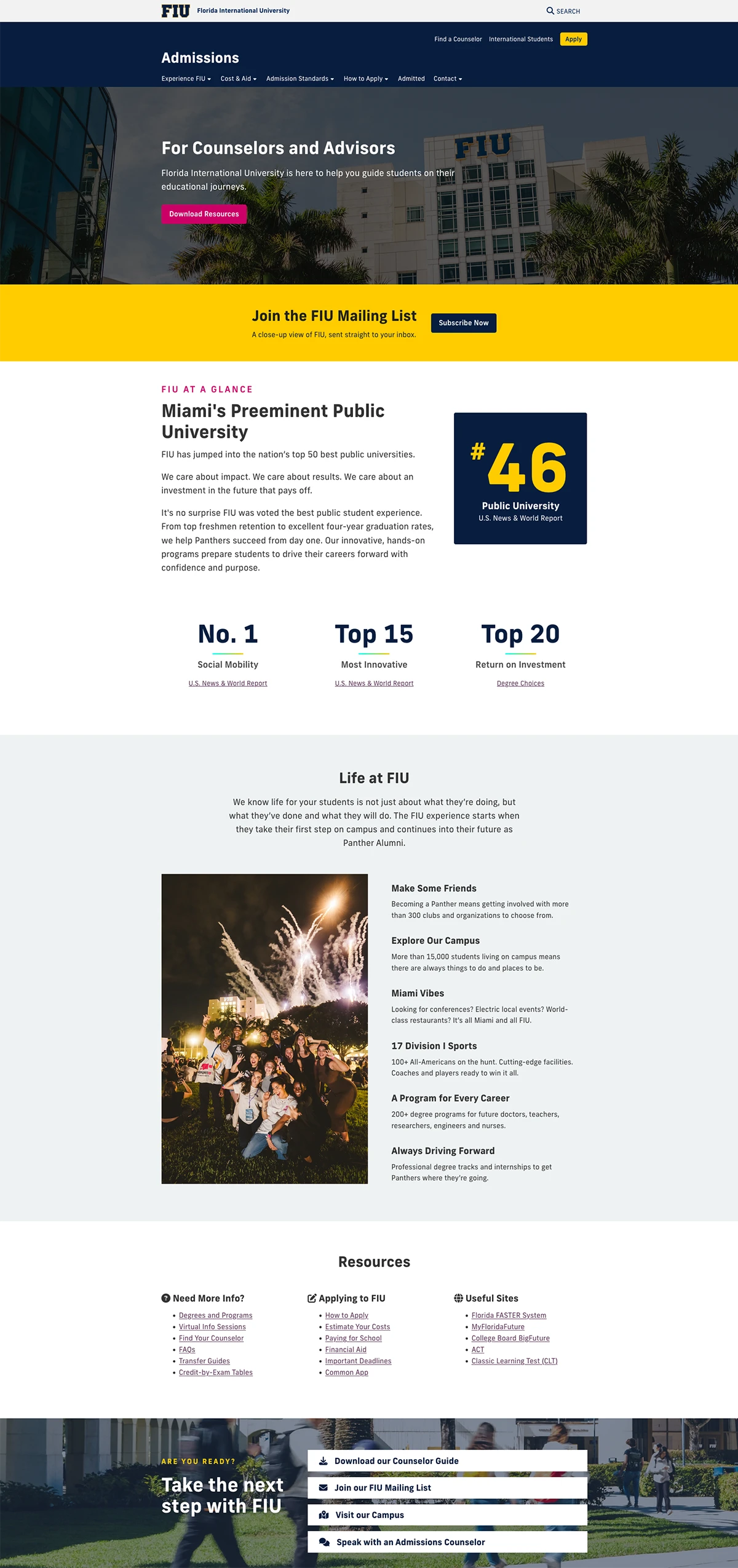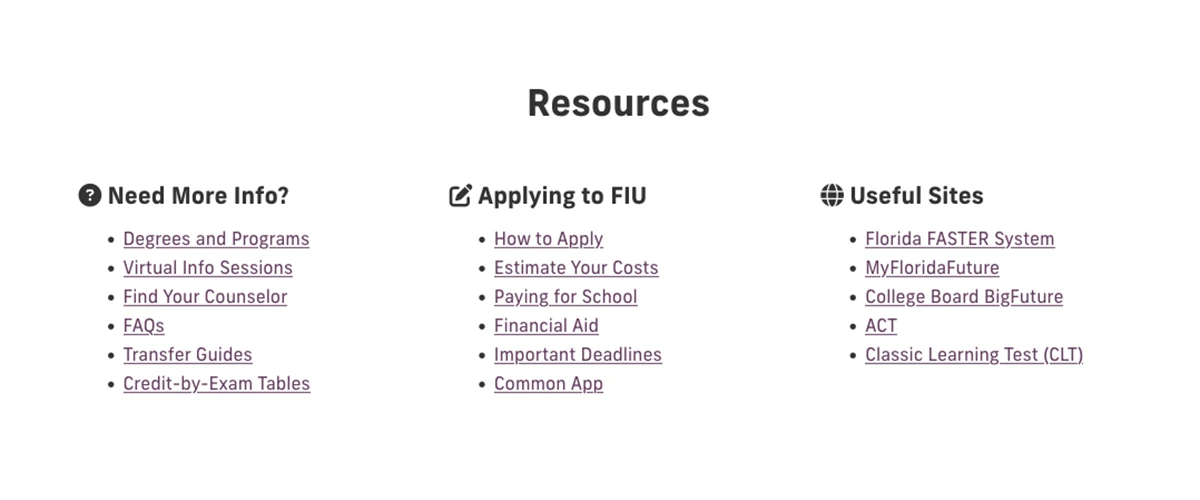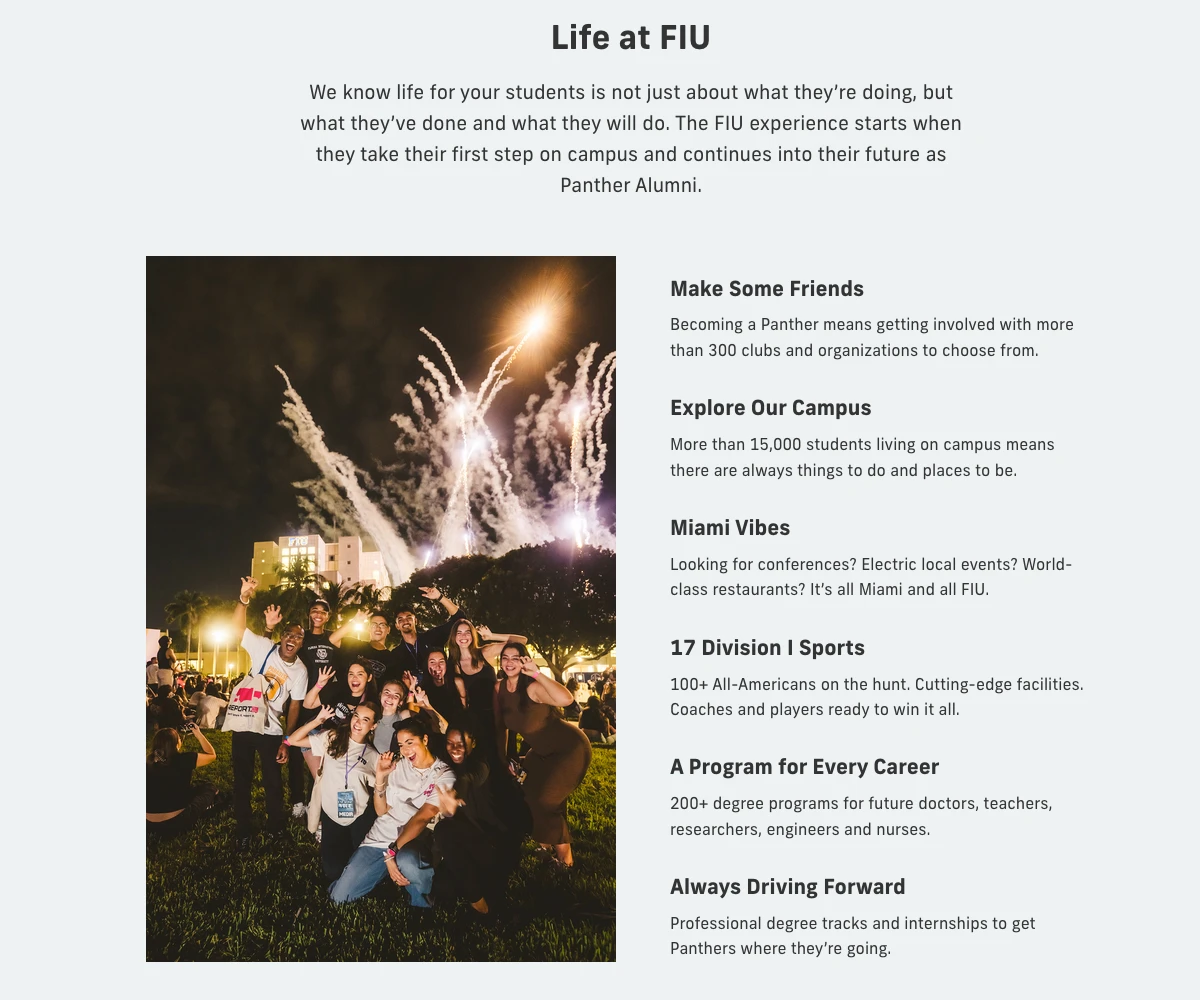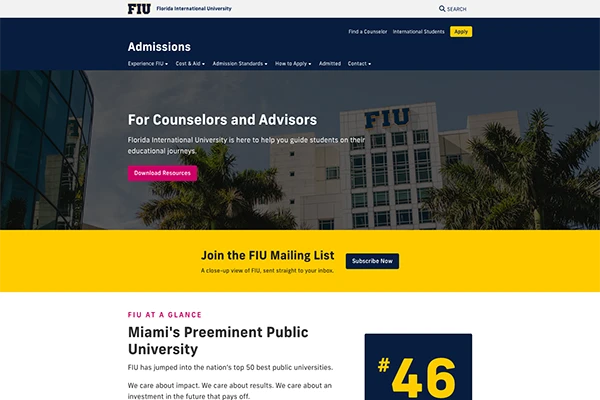Targeted content is content made for a strategically significant audience that is smaller than your website's general audience. This content should accomplish a unique goal that can't be done by an existing page on your website.
That being said, websites are dynamic spaces, so don't hesitate to make targeted content if you have good reasons for doing so!

What is targeted content?
If you are making content for a specific audience as opposed to a larger, more general audience, then it's targeted content! Think about "prospective engineering students" (targeted) versus "prospective students" (general).
Narrowing down your audience can be due to meeting a time-limited or uniquely limited (but still very important) goal.
Some examples of targeted content may include:
- A landing page for promoting a region- or population-specific marketing campaign
- A resource page that pulls information from many different places for the convenience of a particular audience
- A QR code-linked highlights page your department can showcase at an upcoming conference
How and when to create high-quality targeted content
Before getting started, meet with your team and establish goals, audience and need for targeted content. That way, you can have a cohesive strategy for what specialized role the content will play on your website.
Establish goals
First, ask yourself: Do I need targeted content to reach my audience?
It's a more difficult question than it seems, so we recommend working backward from a set of goals that are:
- Clear—Easily understandable and well-defined.
- Measurable—Tied to a number, statistic or other metric that you can use to define success.
- Unique—Unable to be fulfilled by another existing page on your website.
Targeted content should always accomplish goals that no other existing page can do. If your goals can be fulfilled with existing content, then creating new targeted content only confuses users and muddles the overall tone of your website.

"Unique" does not mean your targeted content needs to be full of completely new information, either. The High School Counselor page's main goal was consolidating resources from many sources into one cohesive "brochure" for counselors who may be interested in directing prospective students to FIU. The page's goals were well-designed and straightforward:
- Clear: "We want a page for high school counselors with helpful resources that makes FIU look like a great landing spot for prospective students."
- Measurable: Number of resource downloads and requests for information
- Unique: No other page exists with all these resources or the same tone.
Helpfully, you can apply these requirements to many audiences. For example, the FIU Admissions team might build upon the success of the Counselors page and do something similar for transfer students during an outreach campaign to improve application rates.
Know your audience
Understanding the needs and wants of your audience is important for any content strategy, but it's even more important for targeted content. The targeted audience may also only be relevant for a set amount of time, like the duration of a marketing campaign or a few weeks before a major event.
Given the limited nature of this content, small in size or duration, you must be mindful of making every word and image count!
Establish a need
What makes your targeted content's audience and goals unique compared to the rest of your website?
Using our High School Counselors example, FIU Admissions needed to establish what makes high school counselors different from prospective students and why they needed a separate page for them.

Expectations
Prospective students might expect more informal language, while high school counselors expect a more balanced tone that is both professional and exciting—unusual for the Admissions website where pages are usually one or the other.
Language
Rather than the second-person we often see in prospective student-facing content, there is a lot of language talking about "your student." It's a subtle detail, but it has a major impact on the way the page is read and why it's necessary to have this niche space.
Visuals
We don't skimp out on fun with the visuals on High School Counselors, but the "vibe" is different. Visuals capture the full scale of FIU rather than more personal or candid photos meant to connect with individual prospective students.
What's next?
Targeted content is a great way to communicate with niche audiences and fulfill unique goals that cannot be accomplished using existing content on your website. Though it's a valuable tool, you should be mindful when deciding to make targeted content to avoid crowding your website with unnecessary material.
Does targeted content seem like a good addition to your unit's web strategy after your team's ideation on goals, audience and uniqueness? Then don't hesitate to Start a Project with us at the Office of Digital Communications.
